Light and Color
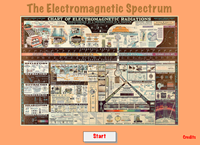 Electromagnetic Spectrum Infographic
Electromagnetic Spectrum Infographic
For some time, the public domain infographic from 1944 that was rescued from the trash and made popular by Lawrence Livermore National Laboratories has fascinated science teachers of all disciplines. And now The Physics Classroom has made an Interactive version that will allow students to explore its many layers of information and glean an understanding of electromagnetic waves as made popular by this timeless piece of science and art.
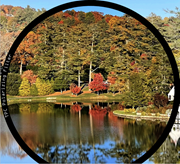 Polarization by Reflection
Polarization by Reflection
We have a photograph for you to look at. How could the photographed scene been improved if the scene was photographed with a Polaroid filter? Rotate the filter and find out.
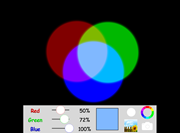 RGB Color Addition
RGB Color Addition
Turn on the colored spotlights. Adjust their intensity. And learn some principles of color addition. View a computer image in terms of its red, green, and blue color components. Even upload your own image and view its RGB components.

Now available with a Concept Checker.
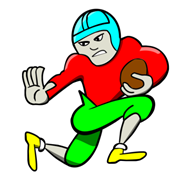 Painting with CMY
Painting with CMY
The football coach wants new uniforms and you're in charge! Oddly enough the uniform supplier wants you to place the order by indicating what colors of pigments should be imparted to the fabric. It's time for you to learn about colored pigments and the rules of color subtraction. Open our Interactive and start painting. You'll learn the rules in no time and we'll even clean the mess up for you.

Now available with a Concept Checker.
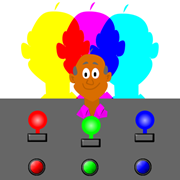 Colored Shadows
Colored Shadows
Did you know that the color appearance of an object can be changed by changing the color of light that shines on it? It can! And now you can find out how by using our Colored Shadows Interactive. You can explore the color appearance of a person and of the shadows creating by that person on a white screen with our Colored Shadows simulation.
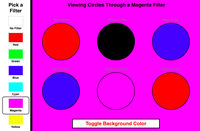 Filtering Away
Filtering Away
A color filter is a transparent film that absorbs a range of wavelengths of light. Looking at the world through a color filter will change the color appearance of objects. And lucky for you this can be done for FREE ... right here at The Physics Classroom. Take a peek, free of charge, at a set of six colored circles as seen through one of six filters.

Now available with a Concept Checker.
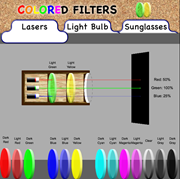 Colored Filters
Colored Filters
Perhaps you have looked at the world through sunglasses that have a colored tint. Exactly how do they work? We can answer this question as we would many questions in life. They work because of physics. And in this simulation, you will probe the answer by learning about color filters. You won't need any expensive lasers; we'll provide those for you. You won't even need any colored-tinted sunglasses; we got you covered there too. All you need is an inquisitive mind and our Colored FIlters Interactive.
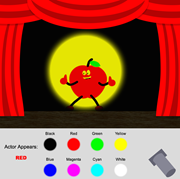 Stage Lighting
Stage Lighting
The curtains open, the theater lights dim, the actors enter the stage, and you begin enjoying the school play. And then all of sudden, the stage lights change colors and the actors appear ... different. The yellow shirt of your favorite actor turns green, leaving you wondering exactly what is going on. Of course, you've just witnessed Physics! And now its time to let all that wondering about colored spotlights and the appearance of actors on the stage turn to understanding. So open this Stage Lighting Interactive and start finding some answers.

Now available with a Concept Checker.
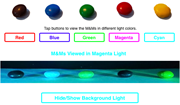 Viewed in Another Light
Viewed in Another Light
Turn on the white light and look at the color of five M&Ms. This is their color in white light. But what if you can change the light? Will a red M&M always look red? This simulation - more of a collection of photos will allow you to investigate the color appearance of five M&Ms when viewed under various colors of light.
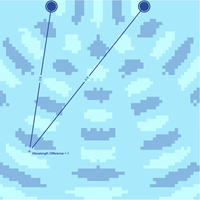 Ripple Tank Simulator
Ripple Tank Simulator
We know. That pesky ripple tank apparatus is a pain to set up. If all you wish to demonstrate is the concept of two-point source interference, here's a painless alternative - the Ripple Tank Simulator. Let the sources begin vibrating and view the pattern. Can you see the nodal and antinodal lines/ Now tap on one of the lines and let the simulator make measurements of the distance to the course and calculate the path difference (difference in the two source-to-point distances). Can you find a pattern?
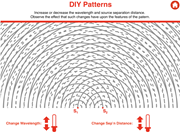 Two Point Source Interference Patterns
Two Point Source Interference Patterns
Grab a ripple tank and disturb the water at a periodic rate in two locations. What do you get? A two-point source interference pattern. Don't have a ripple tank? Then use ours. Explore the patterns that results when waves from two source interfere. Easily change the wavelength or the distance between sources and repeat a trial.

Now available with a Concept Checker.
 Young's Experiment
Young's Experiment
Did you know that light behaves as a wave and has a wavelength? That's right, it does. In fact, the wavelength of the light that the human eye detects is less than one-millionth of a meter in length. That's pretty small. And amazingly enough, scientists
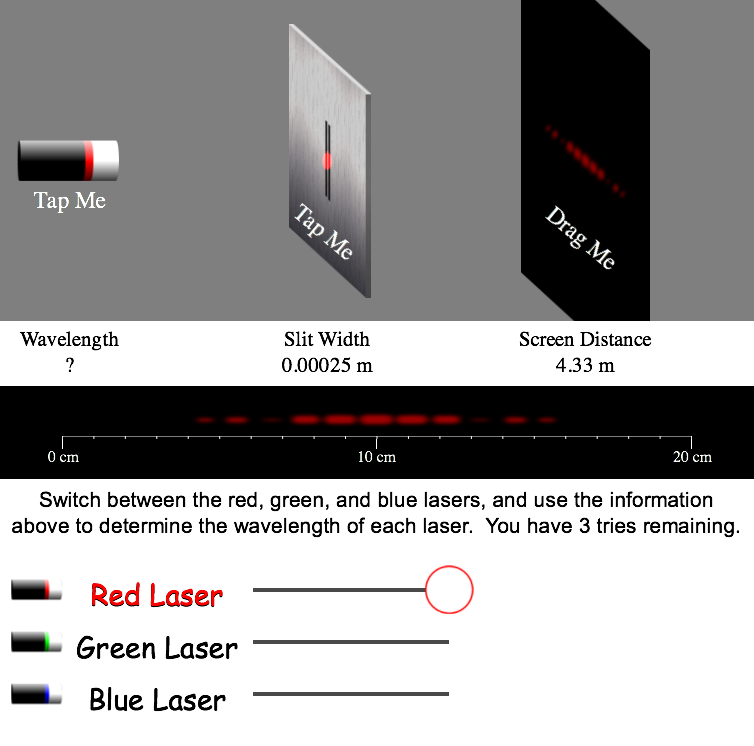
can make
a few simple measurements and calculate its wavelength. All that is needed is a laser, a slide with a couple of closely-spaced slits, and a screen. Don't have the materials handy? That's OK because we have them on loan at our Physics Interactive titled Young's Experiment. So tap on that link and let's get started.

Now available with Task Tracker compatibility.
Learn more.